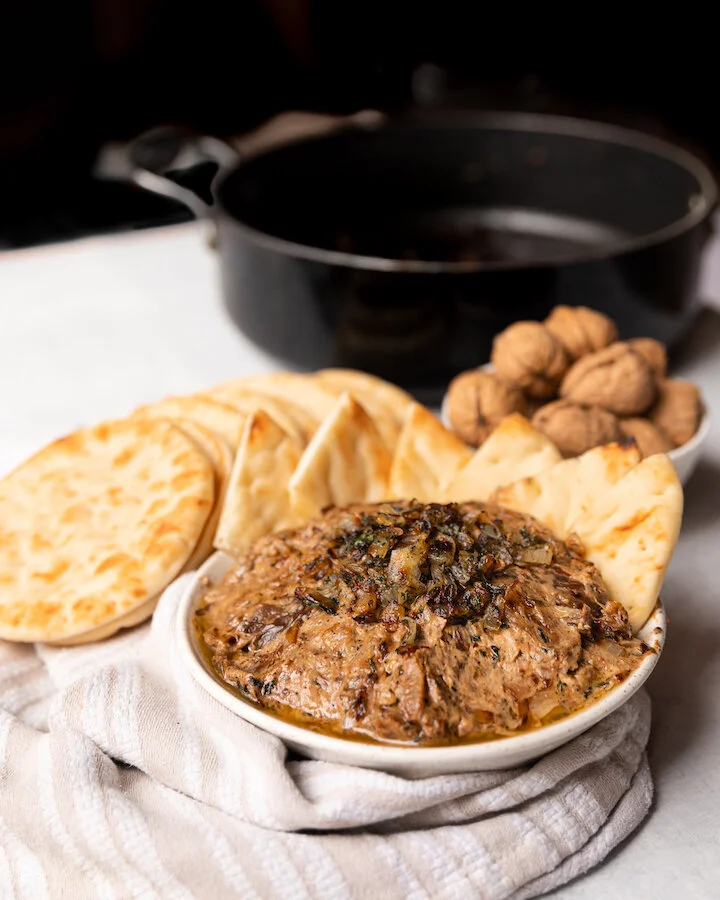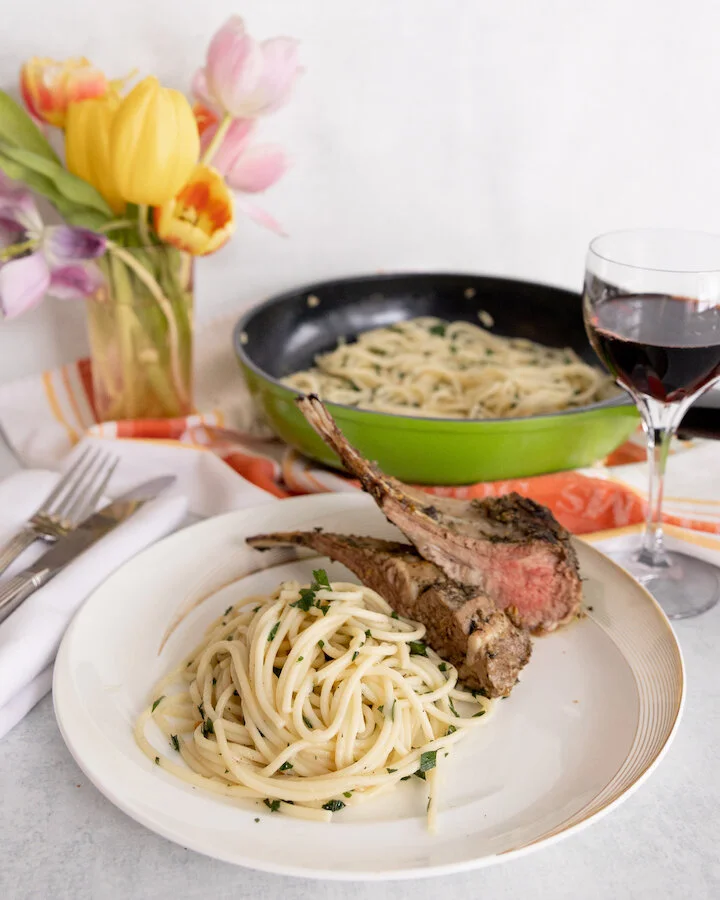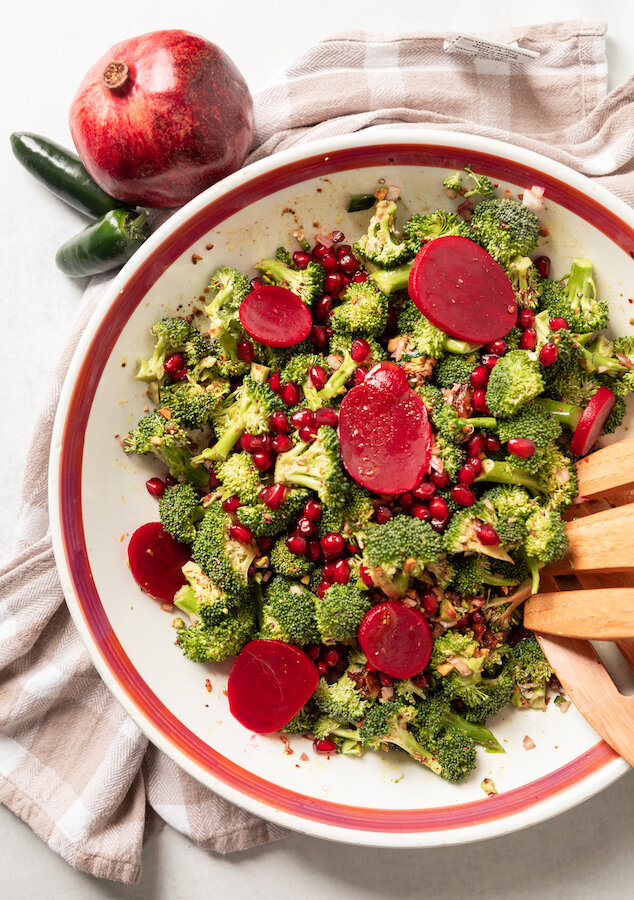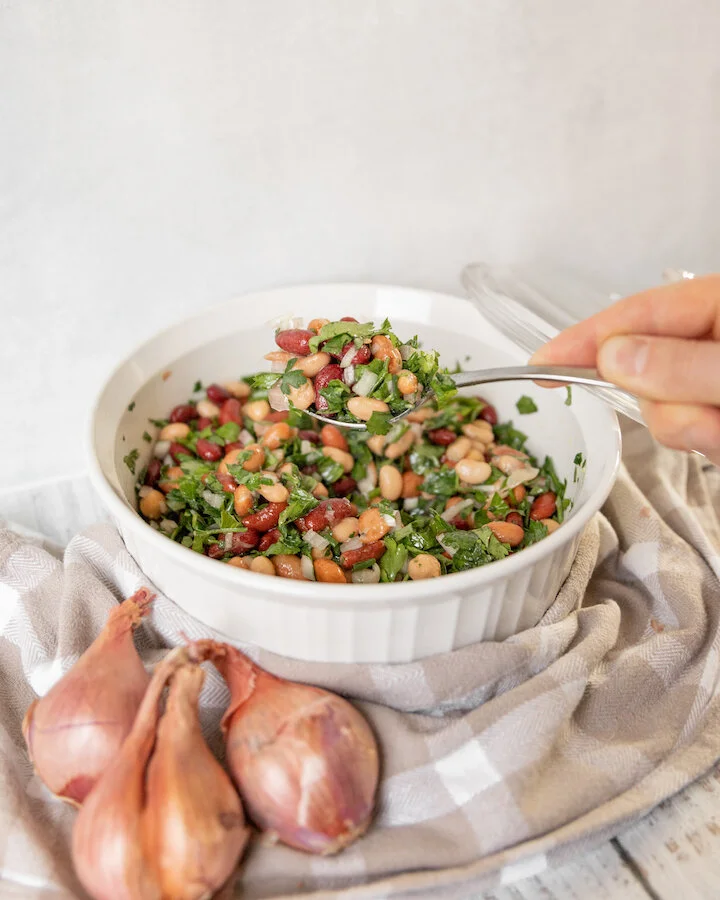KASHKE BADEMJAN (pronounced Cash-kay Bad-em-jan) is a traditional Persian eggplant dip that accompanies meals and is always a favorite amongst my guest. Bademjan literally translates into eggplant in Farsi while Kashka refers to a type of middle eastern dairy. Usually served a little warm or room temperature, this Persian eggplant dip or side dish should always be accompanied by toasted pita or flatbread wedges. I recently made kashke bademjan for a dinner party I had at my sister’s house in Los Angeles and as you can guess, it was a total crowd pleaser. If you are a Vegetarian, love Persian food, or are just a big fan of eggplants then I highly recommend you try this kashke bademjan recipe!
KASHEK BADEMJAN can also easily be made GLUTEN FREE if you serve it on a gluten free pita equivalent or vegan if you do not add the yogurt.
For my dinner party, I made a serving of this for about 6 people. This recipe yields enough for each person to have a really nice size dollop!
PS Don’t forget to watch the video at the bottom if you need extra help!
INGREDIENTS:
6 Chinese Eggplants or Italian Eggplant - cut lengthwise into 1/4 inch strips (if you can’t find Italian or Chinese eggplant you can use regular eggplant too)
1 Cup of Vegetable Oil - divided in 4TBSP portions
4-5 cloves of Garlic minced
1.5 Large White or Sweet Onion chopped
2/3 Cup of Water
1 TSP Salt
1 TSP Pepper
1/2 TSP Cayenne Pepper
1/2 Cup of Walnuts - chopped (I bought them already chopped at the store to avoid needing a food processor)
1 TBSP dried Mint leaves
1 Cup of Plain Greek Yogurt (optional)
Pita Bread
CHECK OUT THESE OTHER DELICIOUS RECIPES FOR SIDE DISHES!
DIRECTIONS:
Start off by adding about 4 TBSP of oil to your skillet. Heat up the oil at medium heat and then add a single layer of eggplant. Cover and let cook for about 6 minutes. Keep an eye on the eggplant so that they don't burn. Once they are browned flip to the other side and let cook for an additional 3-4 minutes or until they are brown as well. Remove cooked eggplant from skillet and onto a side dish. REPEAT until this step until all the eggplant is fried.
In the meantime get another skillet and add about 3 TBSP of oil to it. Let it heat up at medium heat for a minute and once the oil is hot add the chopped onions. Let the onion cook it they become a nice golden (caramelized) colour. This may take several minutes but stir often so they do not burn.
Once all the eggplant is finished and removed from the first skillet add the spices and the garlic to the skillet. Let the garlic cook for a minute making sure to stir it around and coat the bottom of the skillet. Also make sure that the temperature is still on medium so you do not burn the garlic. After a minute add back in the eggplant and mix together. Once mixed add in the water and cover. Let this simmer for about 15-20 minutes or until the eggplant becomes soft and the water evaporates. You may notice that there is a lot of oil that has seeped out the of eggplant, you can drain a spoonful or two out.
In the other skillet the onions should start to look nice and golden. Once the onion is ready remove it from the heat and add in the dried mint. Make sure to crush the dried mint with your hands as you add it in to release/activate the mint smell. Mix in the mint with the onions. *I would remove 2-3 TBSP of this to use as a garnish later.
If you didn’t buy walnuts already chopped, add you walnuts to your food processor and chop them till they are fine but still crunchy (do not over do it otherwise they will become a paste or nut butter)
When the eggplant is nice and tender remove it from the heat and add in the onion, mint and walnuts and stir.
If you are Vegan you are finished.
If you want to continue with the dairy stir in the Greek yogurt until it is fully blended.
Transfer the mashed eggplant to a serving bowl, add the onion garnish you set aside earlier and serve at room temperature with toasted pita or flat bread.
FOLLOW ME ON INSTAGRAM @ISTHATSOH
Thanks for joining me today! I hope you enjoyed this Kashke Bademjan recipe as much as I do. If you have any questions or comments about this persian eggplant dip recipe, please feel free to leave them in the comments below and I will try and answer them as soon as I can!





























